How to Be Fire-Ready in Nature
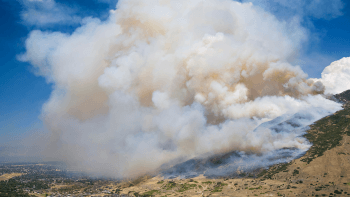
The risk of wildfires continues to rise and pose a direct threat to all Santa Clara Valley residents. Whether you live in a fire-prone area or not, wildfires have the potential to impact the entire community by reducing air quality, negatively impacting water quality and destroying critical infrastructure, like roads and public transportation. While the idea of a wildfire may create some stress and anxiety, being prepared in case of a fire can help minimize these feelings.
The Open Space Authority takes fire safety seriously and wants you to feel prepared on the off chance you spot smoke or fire while enjoying your preserves. Learn how to be fire-ready when accessing your open spaces and what to do in case of a fire:
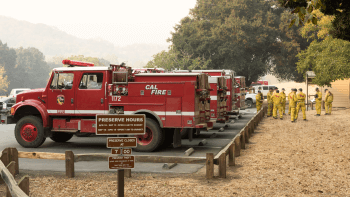
Dial 9-1-1
First and foremost, if you’re enjoying nature and spot smoke or a fire, please dial 9-1-1 so that the appropriate first responders can be dispatched immediately. It’s best to assume that a fire has not yet been reported, so this is an essential first step.
Take advantage of technology
- Wireless Emergency Alerts: If you have a smart phone, it’s likely that you’re already signed up to receive Wireless Emergency Alerts (WEA). These jolting, yet helpful alerts, are sent to your mobile device by federal agencies and transmit critical information via local cell phone towers in the affected areas.
- FEMA App: The Federal Emergency Management Agency (FEMA) App can also share up-to-date information about wildfires in your area and help you stay safe.
- Watch Duty: This is a great tool to have downloaded on your mobile device. Powered by over 150 volunteers, this service monitors radio scanners and other official sources 24 hours a day to send you the most up-to-date information about fires within your local area.

Stay alert & listen for directions
While enjoying nature, stay alert and aware of what’s going on in the surrounding environment and keep an eye out for smoke or embers. Open Space Authority staff managing your preserves are ready at any moment to help guide and bring preserve visitors to safety in case of an emergency. Staff are trained to monitor trails and fire conditions on a daily basis and, in case of a fire, will provide directions to individuals within the preserve.
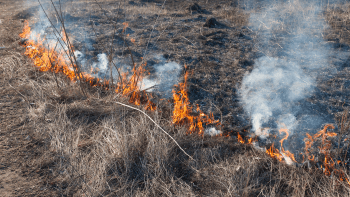
Learn how fire operates
Knowing how a fire moves and grows can also help you understand the safest way to evacuate a preserve. Fires move faster uphill and with the wind versus downhill and against the wind. If you spot a fire while in nature, placing yourself in a position where you can see the fire in front of you and feel the wind against your back may give you additional time to safely evacuate the area.
Fires can also spread rapidly, making it difficult to outrun them. When you see a fire, don’t wait to move – do your best to reach the staging area of the preserve as quickly and safely as possible. Also, if you have difficulty evacuating, try to put yourself into an area that’s already been burned (but not actively burning) -- a blackened area of vegetation or land can be one of the safer places to be during a crisis.
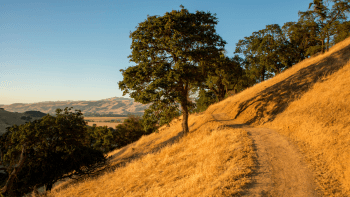
Know your surroundings
Preserve visitors are encouraged to study trail maps prior to arriving at their destination to gain a general understanding of their location at a preserve. Memorizing easy evacuation routes in case of a fire can be extremely helpful and provide you with peace of mind. If a fire is moving quickly, take refuge near an area with little to no vegetation or a body of water.
It’s also important to know the current level of fire danger at a preserve so that you can make the decision whether to enjoy nature or reschedule your adventure for a different day.

Pack the necessities
A few extra items in your trail bag or backpack can help prioritize your safety during a fire. For example, keeping an N95 mask in your bag can help keep your lungs healthy if you encounter smoke. And, having a fully charged mobile device will allow you to make emergency calls to first responders, who can help prevent fires from spreading.
Other items to consider carrying with you: safety goggles to protect your eyes from smoke, a portable charger to keep your mobile device charged, a small first aid kit to address minor injuries and a fire blanket which can be used to extinguish fires.
*Note: many new phones now come equipped with the ability to make emergency calls without access to service. Cell phone users who have access to this feature are encouraged to explore and familiarize themselves with it.
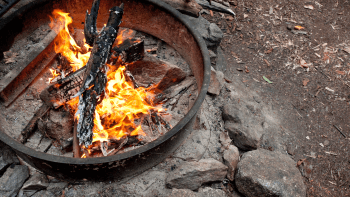
Tips for building a fire
If you’re planning to be in nature and need to build a fire, keep these tips in mind.
Note: Fires are not allowed at any preserves or properties managed by the Open Space Authority.
- To build or not to build (a fire): Don’t build a fire if fires are banned at your location, in dry or windy conditions or near low hanging branches or excessive vegetation
- Don’t leave a fire unattended: Sparks from a fire can easily jump from their current location and, if you’re not paying attention, could very well start a fire.
- A fire must be contained: Do not build a fire outside of a designated fire ring.
- Extinguish any fire you build: Once you're done using your fire, make sure to extinguish it completely – the best practice for putting out a campfire includes waiting until all of the wood turns to ash, pouring water over the ash, mixing it around and repeating the process until the fire is cool to the touch.